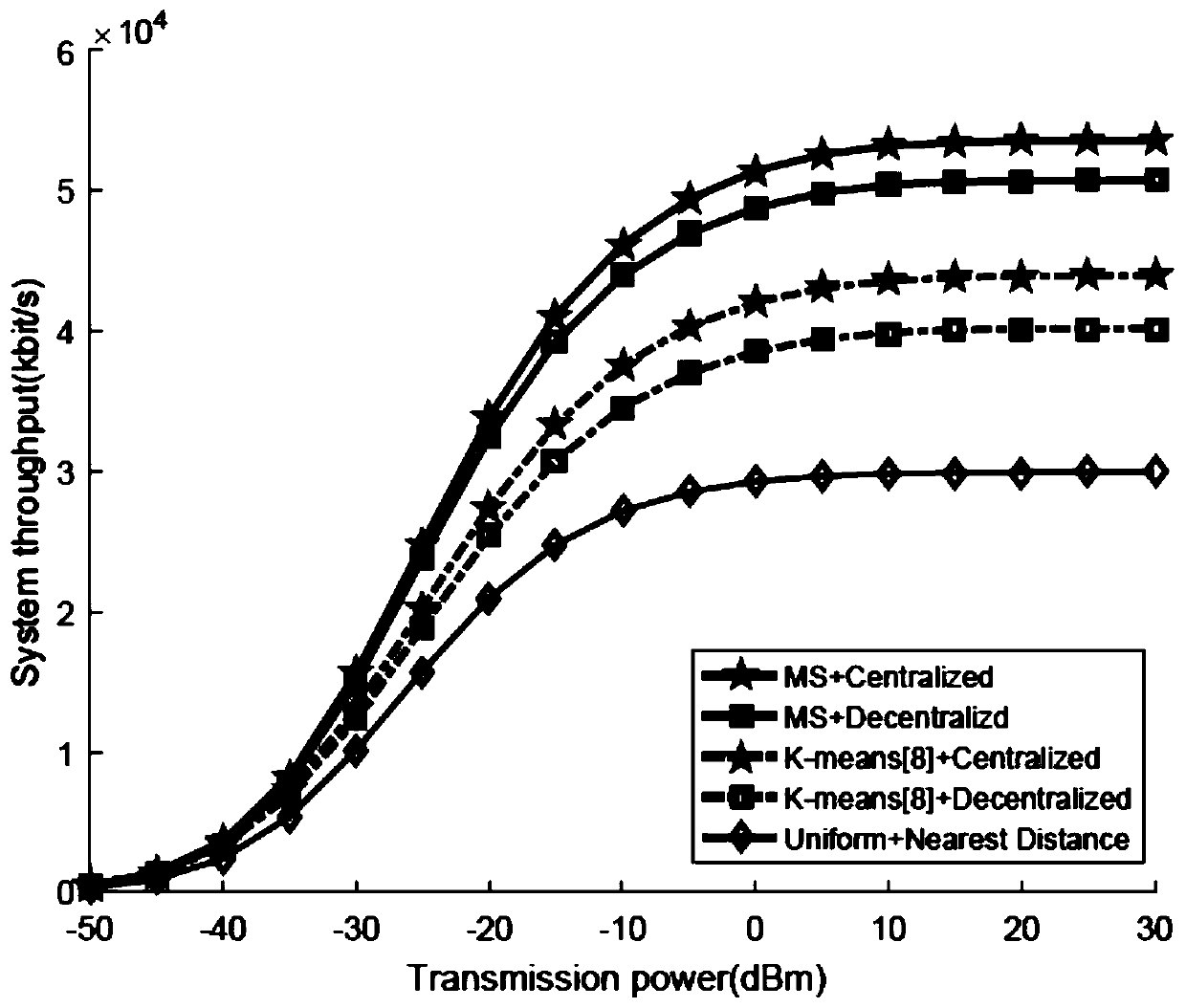Opportunistic signal spatial alignment of multi-user bi-directional relay system
A user and reference signal technology, applied in wireless communication, access restrictions, electrical components, etc., can solve problems such as instability, clustering result differences, and incomplete consideration of the degree of freedom in airspace, etc., to reduce interference and reduce signaling overhead Effect
- Summary
- Abstract
- Description
- Claims
- Application Information
AI Technical Summary
Problems solved by technology
Method used
Image
Examples
Embodiment Construction
[0016] In order to make the object, technical solution and advantages of the present invention clearer, the present invention will be further described in detail below in conjunction with the accompanying drawings. `
[0017] see figure 1 First, the application scenario of the method of the present invention is introduced: a communication system composed of multiple base stations and multiple users, wherein the base station is configured with J antennas, and the user is configured with a single antenna. Here we mainly consider the scenario where the base stations in the cluster can obtain perfect channel state information for cooperative transmission, and the base stations in the cluster no longer exchange information. with H i Indicates the channel matrix from the i-th user to the relay, 1≤i≤K. v i Denotes the beamforming vector of the i-th user. The communication is completed in two stages. The first stage is the base station networking stage. In this stage, the base st...
PUM
 Login to View More
Login to View More Abstract
Description
Claims
Application Information
 Login to View More
Login to View More - R&D
- Intellectual Property
- Life Sciences
- Materials
- Tech Scout
- Unparalleled Data Quality
- Higher Quality Content
- 60% Fewer Hallucinations
Browse by: Latest US Patents, China's latest patents, Technical Efficacy Thesaurus, Application Domain, Technology Topic, Popular Technical Reports.
© 2025 PatSnap. All rights reserved.Legal|Privacy policy|Modern Slavery Act Transparency Statement|Sitemap|About US| Contact US: help@patsnap.com



